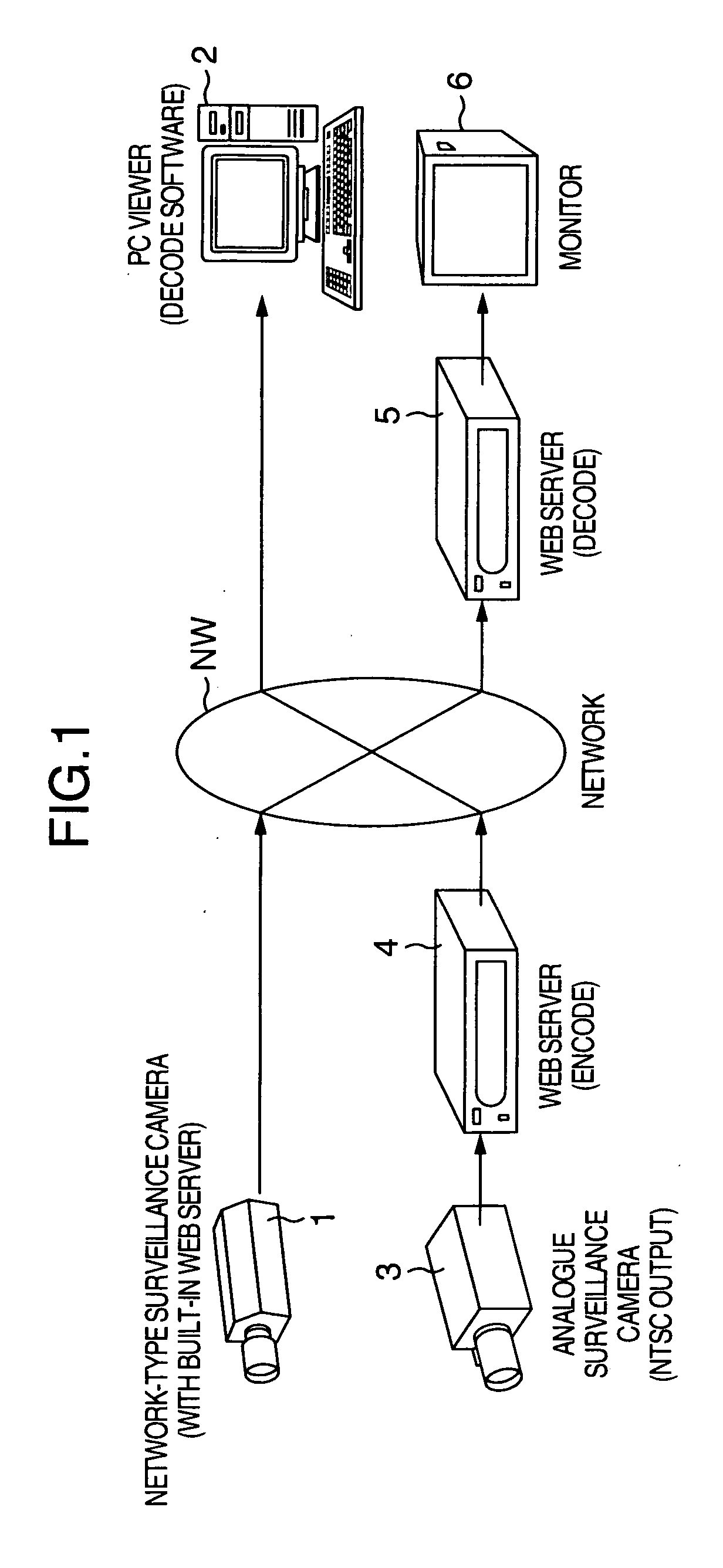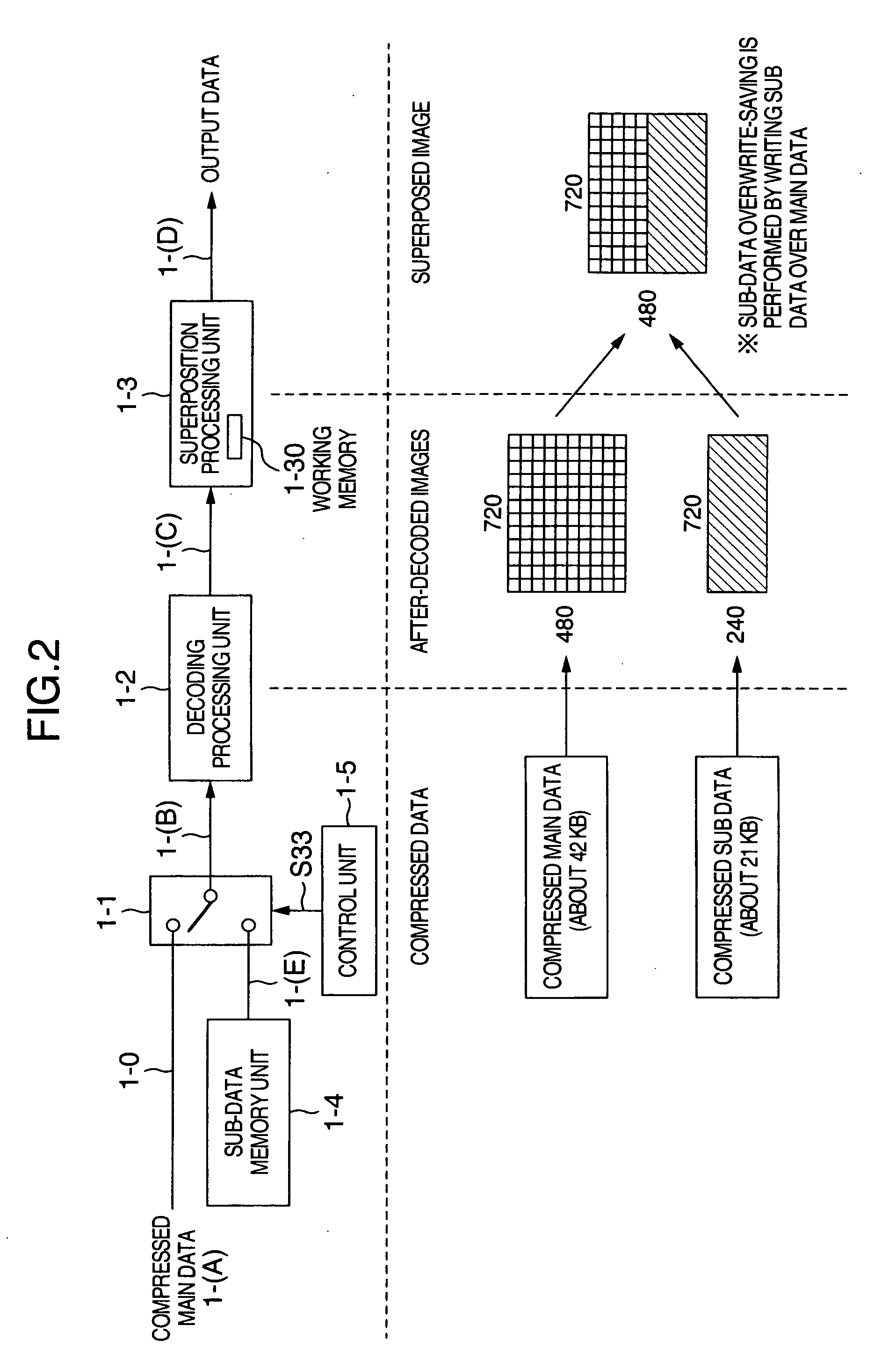Decoding method and decoding apparatus
- Summary
- Abstract
- Description
- Claims
- Application Information
AI Technical Summary
Benefits of technology
Problems solved by technology
Method used
Image
Examples
Embodiment Construction
[0020] Hereinafter, referring to the drawings, the explanation will be given below concerning embodiments of the present invention. Through all of the drawings, same reference numerals will be used to designate similar members.
[0021]FIG. 1 is a schematic diagram for illustrating the configuration of a general surveillance system. A network-type surveillance camera 1 and an analogue surveillance camera 3 are set up at each surveillance point or site, thereby taking images of a surveillance target, the images being main data. After applying a compression processing to the images taken, the network-type surveillance camera 1 sends out the compressed images to a network NW. The images taken by the analogue surveillance camera 3 are supplied to a WEB server 4, then being subjected to the compression processing in this WEB server 4. After that, the compressed images are sent out to the network NW. Meanwhile, in the surveillance center, a PC viewer 2, a WEB server 5, and a monitor 6 are p...
PUM
 Login to View More
Login to View More Abstract
Description
Claims
Application Information
 Login to View More
Login to View More - R&D
- Intellectual Property
- Life Sciences
- Materials
- Tech Scout
- Unparalleled Data Quality
- Higher Quality Content
- 60% Fewer Hallucinations
Browse by: Latest US Patents, China's latest patents, Technical Efficacy Thesaurus, Application Domain, Technology Topic, Popular Technical Reports.
© 2025 PatSnap. All rights reserved.Legal|Privacy policy|Modern Slavery Act Transparency Statement|Sitemap|About US| Contact US: help@patsnap.com



